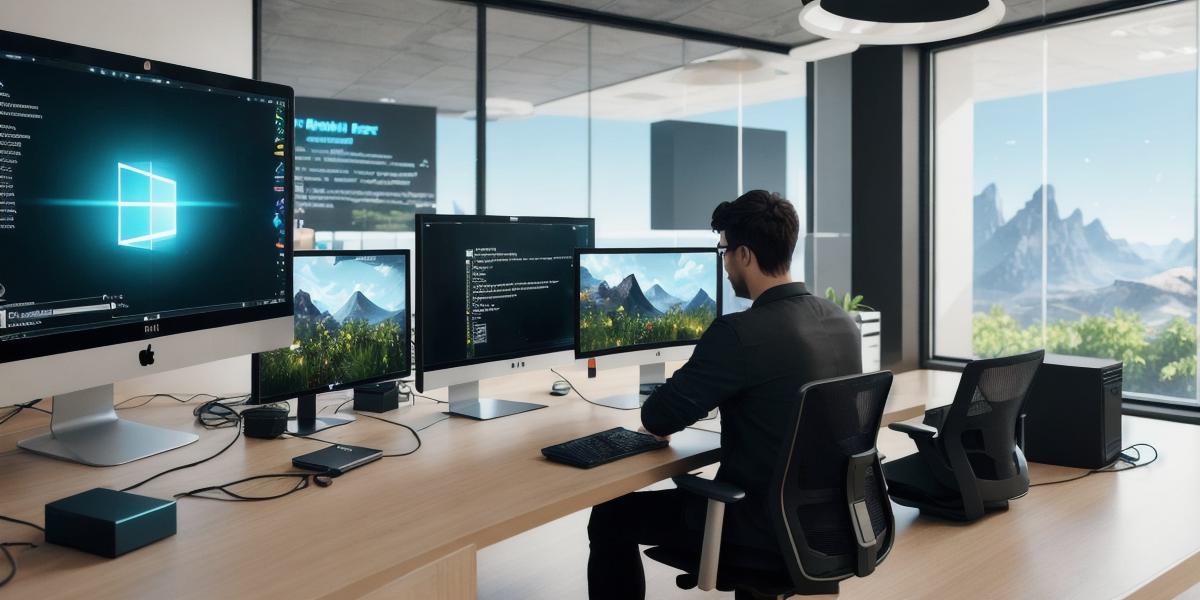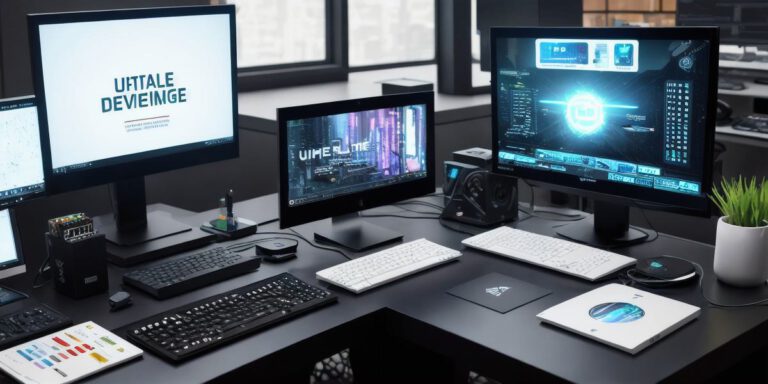Unleash Your Creativity with Unreal Engine: A Beginner’s Guide to Game Development

Are you tired of being limited by your imagination? Do you want to create immersive and engaging games that captivate players from the first frame to the last? If so, it’s time to unleash your creativity with Unreal Engine.
Unreal Engine is a powerful game engine that allows you to create stunning visual effects, complex physics systems, and interactive environments with ease. With its intuitive interface, easy-to-use tools, and vast community of developers, Unreal Engine is the perfect tool for anyone looking to start game development.
In this beginner’s guide, we will cover everything you need to know to get started with Unreal Engine, from setting up your development environment to creating your first game. We will also explore some real-life examples of games created using Unreal Engine and discuss the skills and knowledge you’ll need to succeed in this exciting field.
Getting Started
Before we dive into the details of game development with Unreal Engine, let’s first take a look at what you’ll need to get started. To use Unreal Engine, you will need a computer that meets the system requirements. You can check these requirements on the Epic Games website. Additionally, you will need to download and install the latest version of Unreal Engine.
Once you have your development environment set up, it’s time to start creating games. Unreal Engine provides a variety of tools and features that make game development easier than ever before. These include:
- Blueprints: A visual scripting system that allows you to create complex game logic without writing code.
- C++: A powerful programming language that gives you complete control over your game’s behavior.
- Physics Engine: A highly advanced physics simulation engine that can handle complex simulations with ease.
- Animation tools: Advanced animation tools that allow you to create realistic character movements and animations.
- Mesh editor: A powerful mesh editor that allows you to create, edit, and manipulate 3D models.
Creating Your First Game
Now that we’ve covered the basics of game development with Unreal Engine, let’s take a look at how you can create your first game. To start, you will need to choose a game concept. This could be anything from a simple 2D platformer to a complex open-world adventure.
Once you have your game concept in mind, it’s time to start creating assets. Assets are the building blocks of any game and can include everything from characters and environments to sound effects and music. Unreal Engine includes a variety of tools that make asset creation easier than ever before. These include:
- Mesh editor: A powerful mesh editor that allows you to create, edit, and manipulate 3D models.
- Texture editor: An advanced texture editor that allows you to create, edit, and apply textures to your game’s assets.
- Sound editor: A powerful sound editor that allows you to create, edit, and apply sound effects to your game.
Once you have all of your assets created, it’s time to start programming your game. Using Unreal Engine’s blueprint system, you can create complex game logic without writing code. Alternatively, if you prefer a more hands-on approach, you can use C++ to write custom code for your game.
Finally, once you have all of your assets and code created, it’s time to start testing and debugging your game. Unreal Engine includes a variety of tools that make this process easier than ever before. These include:
- Debugging tools: Advanced debugging tools that allow you to identify and fix issues in your game’s code.
- Profiling tools: Powerful profiling tools that








